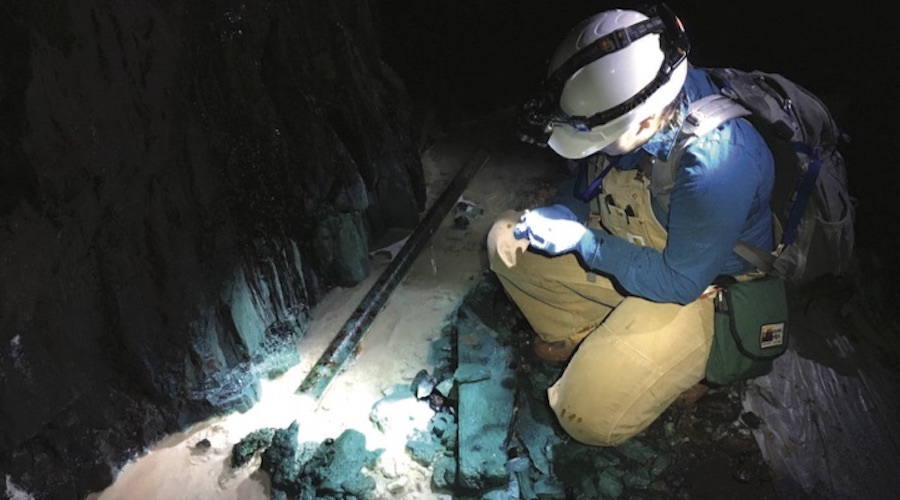
Yet, igneous rocks make up a majority of Earth’s continents. Their deep, dark and anoxic fracture systems are home to microorganisms that gain energy from the consumption of gases, nutrients in fluids and sparsely available organic carbon.
Normally, fossils are thought of as exclusive features of sedimentary rocks
Although recent studies have assessed how “modern life” copes at depth, not many scientists have put the spotlight on ancient signatures of non-human creatures.
“We examined mineral samples from more than 30 mines and found solid proof for microbial activity in the majority of them,” Henrik Drake, lead author of the study and associate professor at the Linnæus University, said in a media statement. “We looked for, and detected, three types of biosignatures: isotopic, molecular and morphological, from the three domains of life, namely archaea, bacteria and eukarya.”
According to Drake, a mine of particular interest was the Kallmora Silvermine in Sweden’s Berglsagen mining area. Since this mine has been abandoned and water-filled for more than 100 years, the researchers had to consult museum mineral collections to obtain samples from the deep. The site, however, contained some of the most compelling evidence of ancient life yet recorded and revealed that both methane-producing and sulfate-reducing microorganisms had occupied the fracture system in the past.
“Aided by micro-analyses of stable isotopes of carbon and sulfur in the minerals, we could attest that the methane producers were succeeded by the sulfate reducers,” Drake said.
In the paper, the researcher and his colleagues explain that the isotope analyses were paired with micro-analytical uranium-lead geochronology of vein filling carbonate minerals, which allowed them to discover that the methane producers were active about 50–30 million years ago, and the sulfate reducers 19–13 million years ago.
Mineral veins represent an untapped archive for signs of ancient life
“Another exceptional finding of the Kallmora mine was that sulfate reducers could be distinguished also by remains of specific bacterial fatty acids preserved within the mineral veins”, Manuel Reinhardt, co-author of the study, said. “Furthermore, the sulfate reducers that lived in this mine left behind sulfur isotope signatures in a mineral called pyrite, and those are the most extreme biosignatures yet found in the mineral record of our planet. A world record of sulfur isotopes if you will.”
In the experts’ view, their findings demonstrate that signatures of ancient life are omnipresent in the igneous crust of the Fennoscandian shield and, thus, it is reasonable to believe that the same signatures occur at depth across other continents.
“Mineral veins are just the perfect graveyards for microorganisms, and represent an untapped archive for signs of ancient life,” Drake said.
The researcher wondered if this same logic could even be applied to the search for ancient life on other planets.




